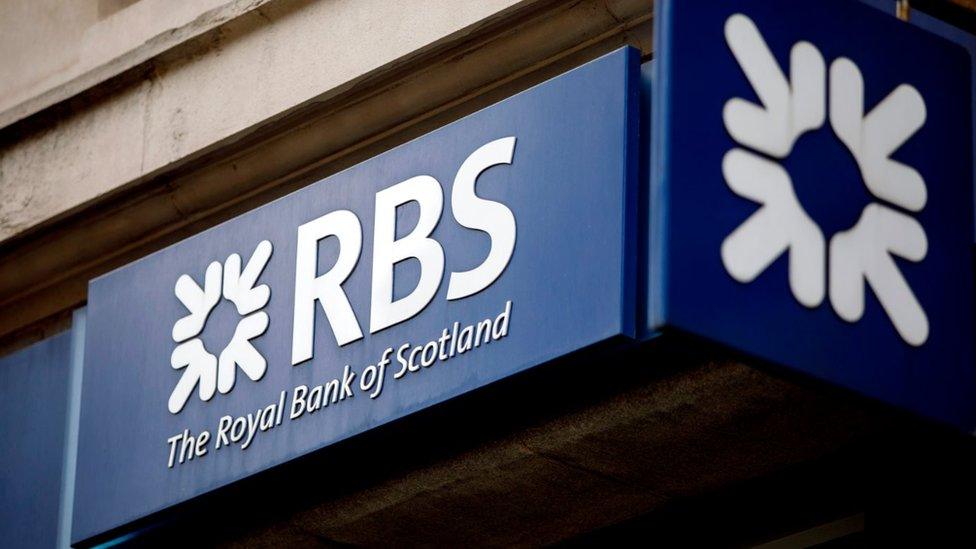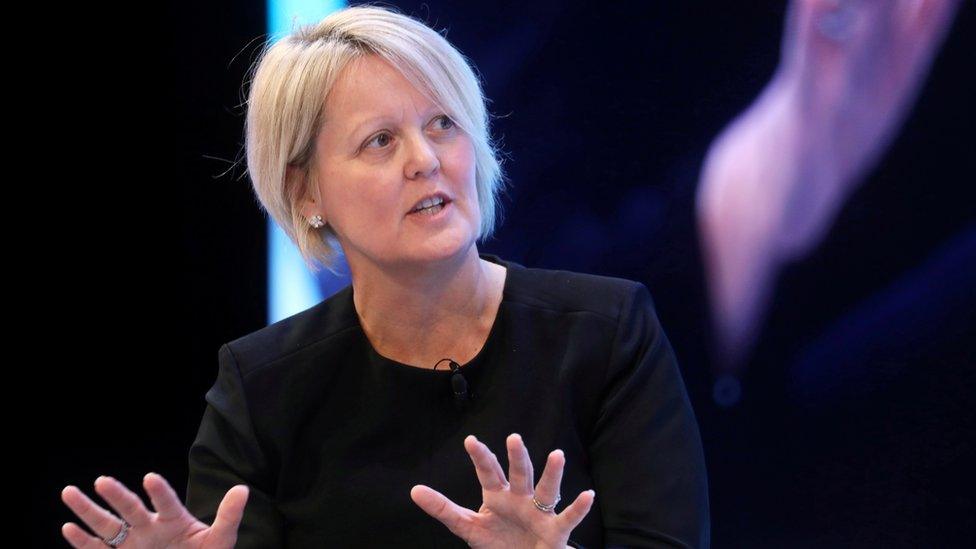RBS and NatWest: Brand new
- Published

Aged 293, the Royal Bank of Scotland brand will remain for Scots customers, but its reach beyond the country is too tainted to carry much value. The brand has become a burden.
Surveys of customers have consistently shown that it lacks the trust with customers that NatWest has retained.
It's a useful symbolic move to underline the start of a new chapter for the slow rehabilitation of RBS, under a new chief executive.
Brands are symbols, so there's a symbolism to the change of name at Royal Bank of Scotland Group. The brand remains above the remaining branches in Scotland. Other customers will only see the change in the small print of their bank statements and loan agreements.
This change has been some time coming. It looks as if it was left for Alison Rose to deploy as a signal of a new regime and a new chapter.
It came with a new "purpose" - of championing potential for people, families and business. It remains to be seen if that has significance, as it could surely have been claimed of what went before.
The green agenda is well timed to accompany a big corporate shift that's afoot, both under pressure and out of self-interest. In the preceding two days, BP and then Ineos had set out their greener plans.
And don't under-estimate the importance of "learning" as one of the new priorities. Financial firms struggle to communicate with so many financially illiterate customers.
Trust
Ms Rose's predecessor, Ross McEwan, simplified the bank and focussed it much more narrowly on the UK and Ireland markets.
The New Zealander's achievement was to sort out the finances and get RBS/NatWest back in the black. He said it was for his successor, and a second decade of recovery, to sort out the reputational damage from the Royal Bank meltdown.

Chief executive Alison Rose was appointed in 2019
The official explanation of the name change is that 80% of customers know their bank as NatWest. Older ones may even call it National Westminster. But there's more to it than that.
The Net Promoter Scores became one of the main measures of the bank's performance under Mr McEwan. It uses surveys of customers (and it's also used by other banks) to ask if they would recommend the bank (under the brand they know best) to others.
The response was clear and consistent across each quarter. By the end of last year, taking the percentage of Royal Bank of Scotland customers who would recommend the bank and subtracting the percentage who would not do so, the Net Promoter Score stood at minus 14.
That is, Scottish customers, however loyal to the RBS brand, tend not to recommend it to others.
But asked the same question, with the same bank and services, NatWest customers tend towards recommending, by a positive margin of 15 percentage points.
With business banking, at which the group is market leader, both brands are consistently in negative territory, but the Royal Bank much deeper into it. At minus 25 percentage points, that was an improvement on preceding quarters.
Asked if they trust the bank "to do the right thing", Royal Bank of Scotland had a score of 39%, while NatWest was up at 62%.
(The question to follow must surely be: if you don't think so, why on earth are you still a customer?)
With that consistent picture, it's not hard to see why the decision was made to rebrand the group, and to accept that some Scottish customers will dislike Fred Goodwin's Gogarburn corporate headquarters, on Edinburgh's outskirts, becoming HQ to a brand rooted so clearly in, of all places, Westminster.
Dividend
It's now down to two residents of Westminster to decide what happens to that 62% share. Neither Boris Johnson nor his new Chancellor, Rishi Sunak, have said much about the shareholding and what they intend to do with it.
Even with a big rise in profit and reduced pain from the price of past wrongdoing, the share price is nowhere close to break even point for the British taxpayer.
Selling it might raise roughly enough money for one or two of the Johnson administration's pet infrastructure projects - say, a bridge from Scotland to Northern Ireland.
But then, getting a dividend payment for £1.7bn with the 2019 results isn't such a bad outcome for Mr Sunak either. The Treasury could grow to like those regular cheques.
- Published14 February 2020

